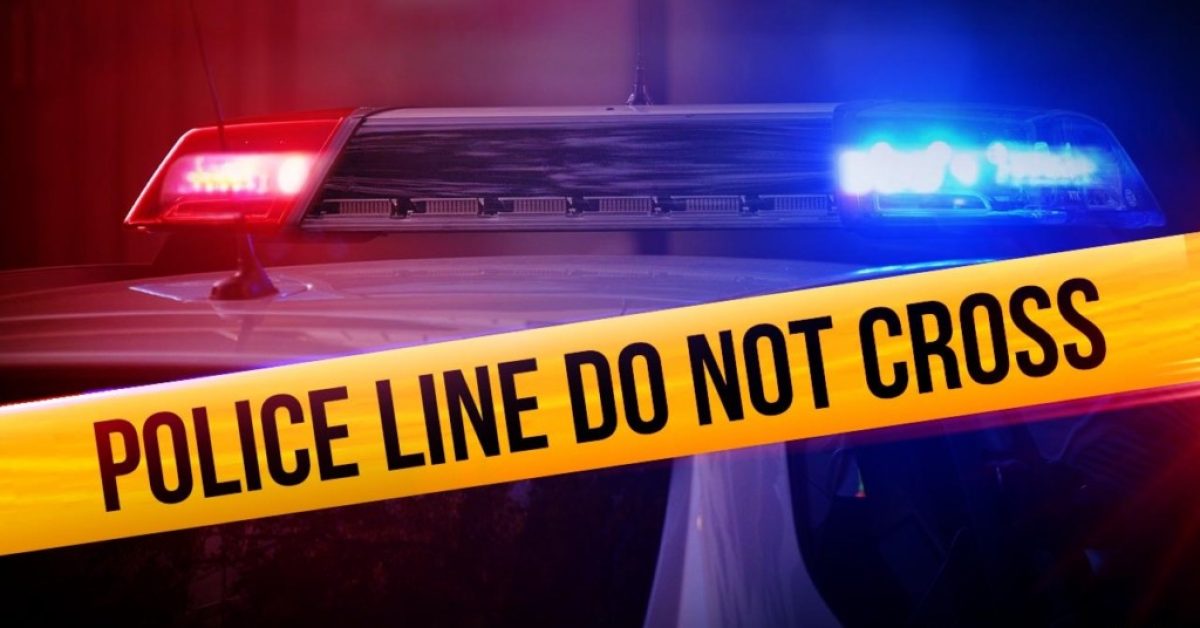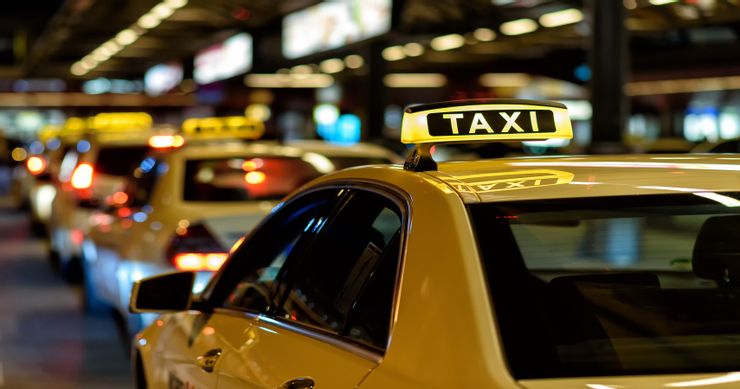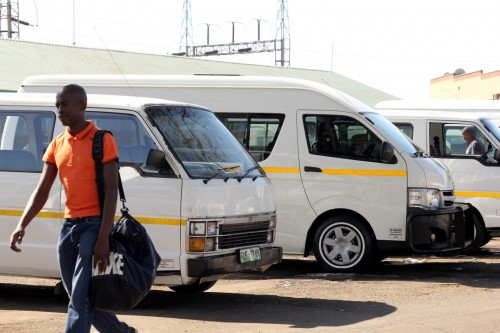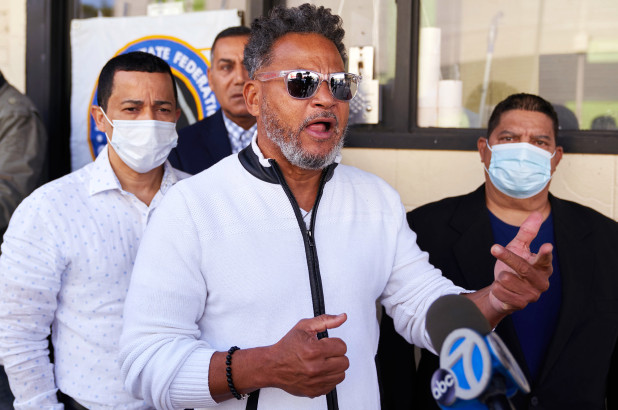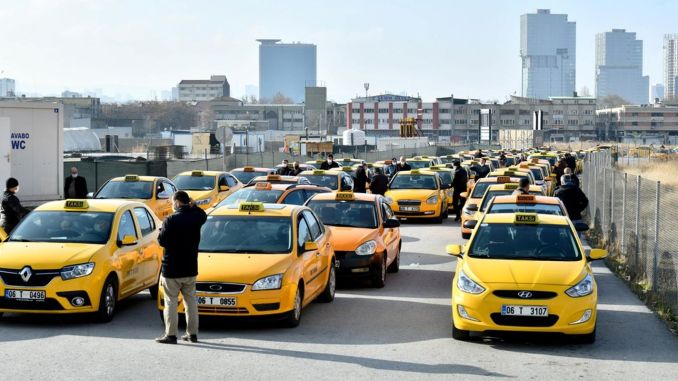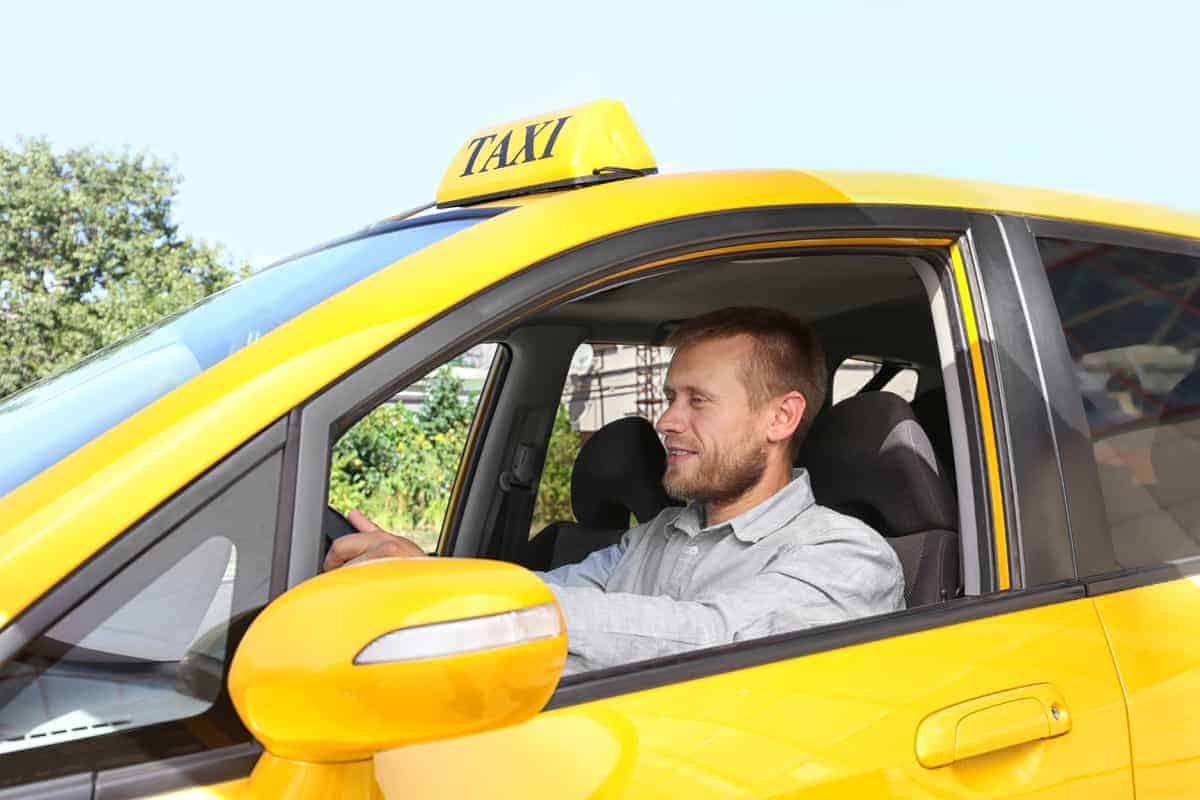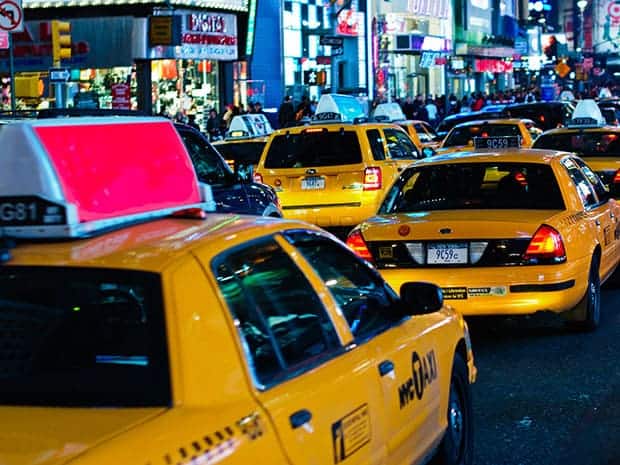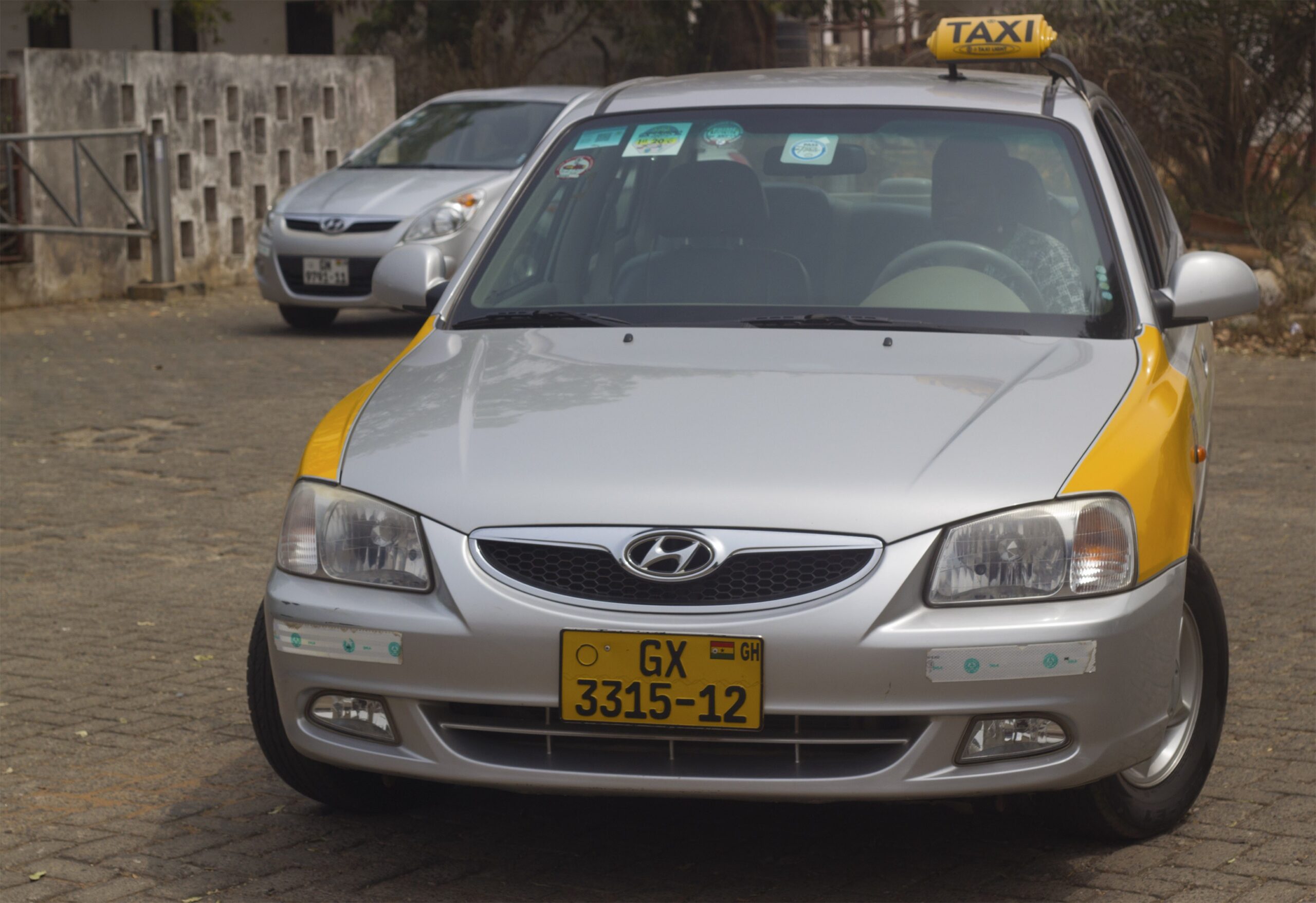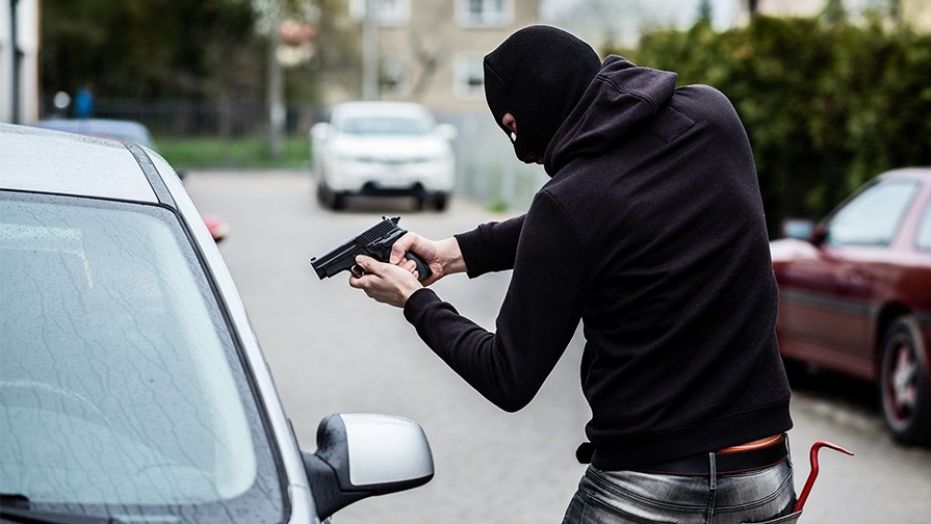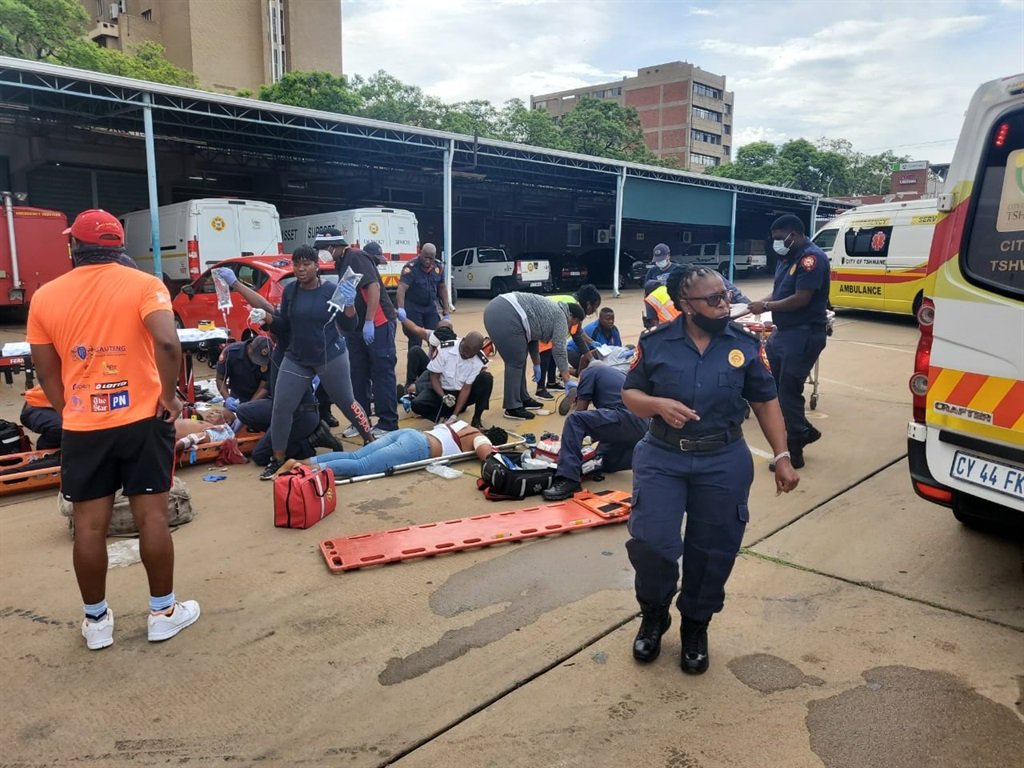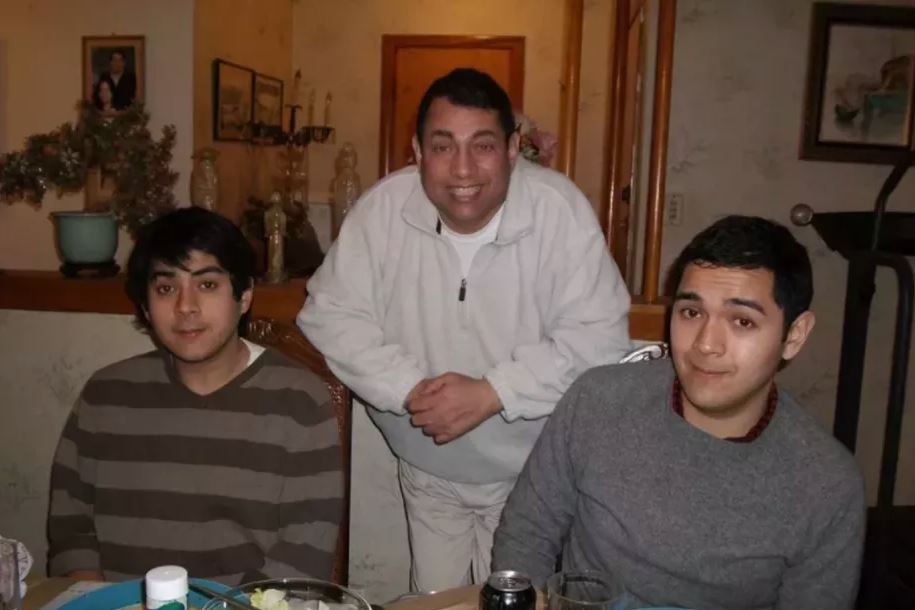Fifteen years after taxi drivers began lobbying for protections against the alarming assaults and murders plaguing cabbies across the country, the federal government weighed in on the issue.
In the spring of 2000, the Occupational Safety and Health Administration (OSHA) warned of the dangers of driving a cab — taxi drivers today are in the top ten occupations with the highest homicide rates — and endorsed guidelines for driver safety.
Although the guidelines aren’t legally binding or a basis for safety enforcement by OSHA, they serve as a warning to cab companies to upgrade their security. If they don’t, legal experts say, relatives of badly injured or murdered cabbies could prove that the companies failed to meet the minimum safety standards endorsed by the government — and have a better chance of collecting court settlements.
For former cabbie James Szekely Sr., who heads a national safety council for taxi drivers, the OSHA action comes none too soon.
“Picking up hitchhikers for a living,” is how he describes a cabbie’s occupation. And he should know. One night, Szekely was driving a cab in Tampa, Florida, when he picked up a fare that almost cost him his life. “He seemed like a nice guy, looked like a college student about 20- or 21-years-old,” Szekely says. “We talked church, politics, women, race cars — normal guy talk. About eight bucks on the meter, I got him to where he was going. I put the car in park, looked back and he looked like he was getting his money, so I reached on the dashboard to get my sheet. All of a sudden, he pulled out a knife and just slit my throat and stabbed me twice in the back.”
Unfortunately, random stabbings, shootings and beatings are all too common occurrences in today’s taxicab industry. Between 1992 and 2006 700 taxicab drivers were the victims of homicide while driving for work, according to the National Institute of Occupational Safety and Health. NIOSH reports that taxi drivers face a greater risk of injury or homicide on the job than those working in law enforcement and security.
They are also victim to more non-fatal assaults (184 per 1,000 cabbies) than any other occupation with the exception of police (306 per 1,000) and private security guards (218 per 1,000). “Many, many drivers here have been attacked, and several have lost one or two fingers because they were shot,” said a cabbie in Richmond, California. “One man I know was shot and paralyzed, but he feels lucky to even be alive.”
In that sense, Szekely was equally lucky. Although badly injured and suffering from post-traumatic stress disorder, he spent several weeks recovering from the assault and then returned to his job. But when Szekely requested that a safety shield be installed in his cab, he was fired.
The following year, in 1985, Szekely organized the International Taxi Drivers Safety Council to help drivers who have been assaulted on the job and to push for nationwide safety standards for the profession. Despite his efforts, the next year nearly 100 cabbies were murdered on the job.
Staying safe and sane on the job
Driving a cab definitely involves a lot of stress, according to taxi owner and driver Kathy Pavlofsky of Berkeley, California. “You never know who’s getting in your cab, so you have to be constantly vigilant and expect trouble at any time,” says Pavlofsky, who drives up to 16 hours a day and manages a fleet of five cabs. To deal with the stress, she goes to the gym and does cardio exercises and lifts weights several times a week. “I have to stay in shape to be able to lift customers’ heavy baggage into and out of the cab,” she says.
And being one of only a small number of women cab drivers carries its own set of risks, according to Pavlofsky. “Men try to flirt with me or try to date me,” she says of some customers. “That’s where I have to be all business. If anyone starts to give me any trouble I pull over and tell them that this is my job, to drive this cab, and if they have any trouble with that they can get out and walk.” She is constantly aware of her safety and says that if any trouble starts, she stops it right away “before it becomes a real problem.”
While Pavlofsky has had her share of problems while driving, she has managed to avoid a serious incident. In addition, as a taxi fleet manager, she tells her employees that they can refuse any fare for any reason if they don’t feel comfortable or think something bad might happen. “A lot of it is about instincts,” she says. “I follow mine and encourage my drivers to do the same.”
Who’s watching out for cabbies?
Cabbies are covered by the general duty clause of the Occupational Safety and Health Act, which states that the employer has a legal obligation to provide a safe working environment.
In the introduction to its new guidelines to protect drivers, OSHA reports that cabbies are 60 times more likely than other workers to be killed while on the job, and that in 1998 alone, 48 drivers were murdered while working. According to NIOSH, the factors that put cab drivers at the greatest risk are working with the public, handling cash, and working alone, at night, and in high-crime areas.
While OSHA concedes that there is no foolproof solution, their new guidelines may help reduce the risk for violence as well as increase a cabbie’s chance of being rescued in case of an emergency. The OSHA recommendations, which contain many safety measures that the International Taxi Drivers Safety Council has been advocating for years, include:
- Safety shields dividing the front seat from the back. Szekely says that bullet-resistant safety shields are the most effective deterrent to an attack, and urges drivers not to operate a vehicle if this partition is not in place between the front and back seats. And OSHA guidelines note a study from the University of Tennessee Transportation Center clearly demonstrates that such shields reduce assaults on drivers.
- Silent alarms, including “bandit lights.” These illuminating devices, also called “hijack lights,” are mounted either on the top of the car or near the front and rear bumpers. When the driver flips them on, the local police will know he or she is in danger and pull the car over. Another driver may also spot them and call 911 to alert police that a driver is in trouble.
- Surveillance cameras within the cabs. Similar to the cameras in convenience stores, these instruments may deter criminals or help police find them after an attack.
- Global tracking or “positioning” systems. These include tiny antennas on cabs that allows the cab dispatcher to track the driver’s location at all times. If a driver is in trouble, the dispatcher activates a switch, and the police will home in on the distressed cabbie immediately.
- Emergency radios. Using an “open mike switch,” the radios allow for fast communication in case of an emergency.
- Caller ID. This tracking system allows companies to trace the location of fares.
- Cashless fare system. A cab that is equipped to work with debit and credit cards may deter cash-hungry robbers.
- Fire extinguishers/first aid kits. These should be handy in the case of an attack or accident.
- Cooperation with police. OSHA recommends that cab companies and the police work together to track high-crime areas.
- Safety training. Drivers should be taught how to best protect themselves, according to OSHA.
- The International Taxi Drivers Safety Council also suggests that all cabs be equipped with an automatic trunk release that would allow cabbies to open the latch from the inside. “The ‘nice’ criminals will lock the cabbie in the trunk while they make their getaway,” Szekely says. “We have had drivers who have spent several days in the trunk of their car in some field, unable to attract attention, and they almost died from suffocation and dehydration.”
Tips for driving safe
Most cabbies are familiar with other work-related hazards, which include lack of exercise, junk-food diets, and stress. But safety remains their number one concern.
In its statement of the dangers of driving cabs, OSHA warns that no employees can be fired for complaining about work hazards. The agency also emphasizes that employers have a responsibility to protect the safety and health of their employees — and that each driver should practice safety as well.
If a cab company refuses to implement these measures, for example, individual drivers may want to seek a different company — and take other steps to protect their own safety and well-being on the job. Al LaGasse, executive director of the International Taxicab and Livery Association, suggests that all drivers complete a defensive-driver training course offered through a local police department, community college, or AAA program. He says that drivers should also heed the following tips while working:
- Carry only a small amount of money at all times, and make frequent cash drops. Invest in a decal that says “Driver carries only $20 in change.”
- Be aware at all times. “Observe the customer’s attitude and keep a close eye on him,” Szekely says. “If you don’t have a safety shield, have the person sit up front with you [where he or she can’t shoot or stab a driver in the back]. At least you can better protect yourself.”
- Make sure your dispatcher always knows where you are and where you are going. Keep accurate trip sheets: If an incident occurs, you’ll have a record of it.
- In isolated, out-of-the-way areas, stay inside your cab at all times to reduce the risk of attack.
- Be courteous and make eye contact with your customer; this may deter some attackers.
- Don’t resist: If a fare has a weapon, experts say, consider it loaded.
Szekely says it’s difficult to resist getting on his soapbox when talking about the hazards of cab driving. “I ask people if they would spend a day picking up total strangers and taking them wherever they wanted to go. They tell me, ‘No, that’s dangerous, that’s insane, you’d have to be on drugs!’ But somebody got to do it — we can’t all be doctors or lawyers. We’re called service workers, and we deserve protection.”
Follow us on our Facebook and Twitter pages for the latest stories, products & updates.


